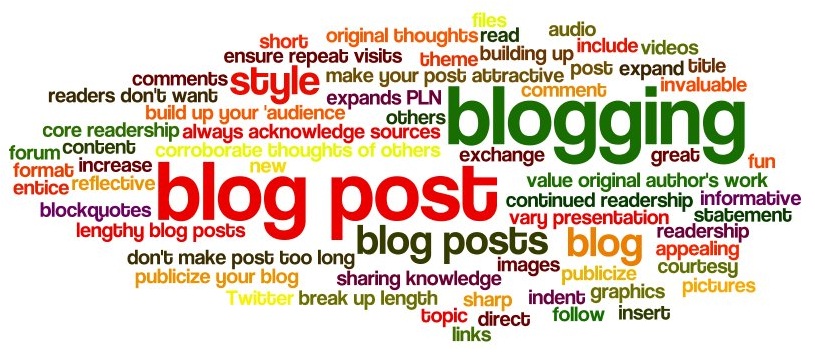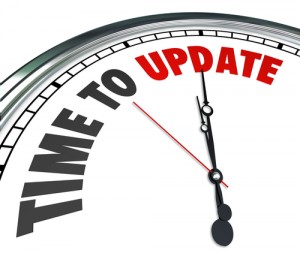 It takes skill to write a great blog but it can be learned and this article will give you some helpful blogging tips by looking at the techniques used by great blogs. Good blogs have the power to bring readers back regularly for more information. Great blogs, in addition will attract growing numbers of readers. This post has some tips to help you write a great blog. By putting them into practice you can grow your skill at writing blog articles and hopefully your blog will be not just a good blog, but also a great blog.
It takes skill to write a great blog but it can be learned and this article will give you some helpful blogging tips by looking at the techniques used by great blogs. Good blogs have the power to bring readers back regularly for more information. Great blogs, in addition will attract growing numbers of readers. This post has some tips to help you write a great blog. By putting them into practice you can grow your skill at writing blog articles and hopefully your blog will be not just a good blog, but also a great blog.
So what makes a good blog great?
- It has content that is relevant to the particular interest group it is aimed at. Obviously if you follow a link to a blog because the hyperlink mentioned “UV protection” and you are interested in beauty, skincare and looking good, but discover that the blog is about polyethylene membranes for agricultural use and aimed at those interested in polymers and agricultural materials you may not be a regular visitor to that blog.
- It is focused on a particular niche. A great blog has a single focus targeting a particular niche. It is authoritative in that area and doesn’t stray from that area. The readers know the general area or scope of the articles, covered by the blog, and over time a certain level of trust in the blog authors is developed. This enables the blog to gain credibility and respect, and leads to a growth in the number of readers visiting regularly.
- It is informative – the readers learn something new or gain new insights from it.
- It is timely. Timing is everything and great articles are posted when the readership would find them most useful. A great family blog would publish an article on “How to choose a Christmas gift for Dad” in November, not in March.
- The story resonates with the readership. Perhaps it appeals to them at a human level because emotionally each of them could be in or near that space too.
- Like all good stories, a good blog article has a beginning, a middle, and an end. The beginning introduces the topic and sets the reader’s expectation for what is to follow. The middle delivers on that expectation and is the main part of the article. The ending closes the article and reemphasizes the main point. It may contain suggestions for further reading and a Call to Action.
- It is helpful. It contains suggestions which would help readers or address a need which they have.
- The article titles are “catchy”. They are carefully crafted to capture the attention of the readers, to raise their curiosity and to encourage them to keep reading.
- The titles are also “search engine friendly”, that is, they contain keywords which people may type into a search query when looking for information about the topic covered by the article.
- The opening line, to use an angling analogy, pulls the readers firmly onto the hook whose bait they nibbled when they clicked on the blog title. The first line is make or break. If it isn’t powerful enough, or doesn’t raise the reader’s curiosity many readers won’t go any further.
- The posts are not too short. Articles of less than 300 words may be seen as too light-weight by the search engines.
- The posts are not too long. Good posts or articles should be no longer than necessary. People are busy and won’t commit the time to read it if the writing style is too bloated.
- The posts are broken into sections and paragraphs. A long continuous block of plain text is very off-putting. The use of section headings (using <h2> or <h3> HTML tags) also provides useful context information to the search engines.
- Good posts don’t contain grammatical or spelling errors. Talk proper, spell korrectly and use the w’rite punctuation! ’nuff said.
 A great blog is regularly updated with fresh content. But how regularly? It depends on the topic area and the frequency at which most of the readers are prepared to visit and read. It can vary from several times daily for blogs dealing with news and current affairs, to every few weeks for narrow interest or very technical topics.
A great blog is regularly updated with fresh content. But how regularly? It depends on the topic area and the frequency at which most of the readers are prepared to visit and read. It can vary from several times daily for blogs dealing with news and current affairs, to every few weeks for narrow interest or very technical topics.- They include images. Images help to break up the monotony of plain text. A picture, graph or illustration can reinforce the message of the text.
- They avoid too much extraneous “clutter”. Give some consideration to the overall page showing your blog post. Is it cluttered with lots of other sections or panes with non-article content which would distract the reader? Extra content above, below, to the left, to the right, or between blog sections, especially if it is changing or flashing, when done to excess, can impair the reading experience for visitors. That’s not to say that a great blog cannot include some advertising to help cover costs. A little is okay and should be relevant to your readers. For more see Advice on Showing Ads in your Blog.
- References or links to other relevant work. This is being helpful to the reader who wants to read more about the topic. You should also reference work whose ideas you use or build on in your blog thereby giving due credit to those authors.
- They have a clear Call to Action if they wish the reader to do something other than navigate away elsewhere without direction. This may be an invitation to contact them, a button to request information or to subscribe to newsletter etc.
- It is quite common for articles to be promoted or publicised on social media, other blogs, websites, or media channels to let people know about them. You may have to give your blog a bit of a push initially to help attract visitors.
- Great bloggers are prepared to invest time engaging with readers who comment on their blog posts and have conversations with each other. This helps to build up a community of readers around the blog.
A great blog isn’t successful overnight
If you are new to blogging, be aware that it can take months or even years of effort and the regular posting of quality articles for a good blog to become a great blog. It takes time for people to discover your good blog, but then they will tell others about your helpful articles and a ripple effect will occur. As you regularly post good quality articles, the size of your readership will grow and your blog will be considered to be a great blog. Don’t expect instant success. Patience and regularly posting great content are necessary ingredients to making a great blog. Remember that the more you help your readers, the more they will help you by telling their friends, relatives and colleagues about your blog, either face-to-face or via e-mail or social media. Don’t be afraid to ask them! At the end of your posts you could finish with the line: Did you find this post helpful? If so, please share using the share links below. That applies to this article too, by the way! See how I did that? 😉
